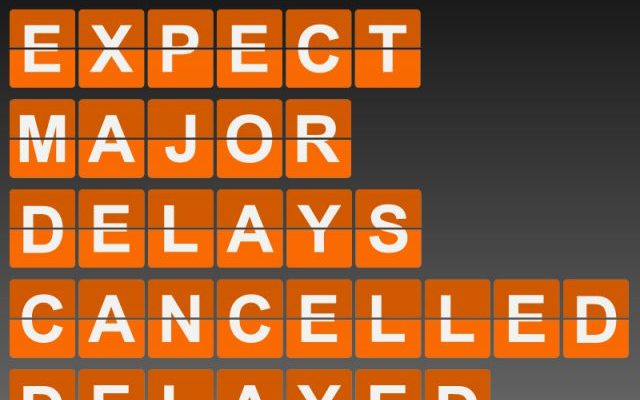According to consumer group Which?, rail passengers lost in the region of 3.6 million hours due to ‘significantly delayed’ trains in 2016-17. While we don’t know how many of these were working hours, it’s a fair assumption that the delays had an impact on productivity at the respective companies the passengers worked for.
This is not to mention how it will have severely impacted the customer experience targets set by the train companies involved.
Similarly, we don’t yet know the cost of the current rail chaos but there can be no doubt about the potential impact it is having on workplaces up and down the country. “Timetable failure” is reportedly to blame but for this should we really read “leadership failure?”
I’ve never been one to issue blame without knowing the full facts but it is hard not to place responsibility on the shoulders of the rail firms’ senior leadership teams. This is, after all, one of the most high-profile and spectacular service delivery shortfalls to the customer seen in recent years. It has blighted people’s home and work lives, and impacted businesses with no satisfactory end in sight for many passengers.
The aim of the new timetables was to increase capacity and take advantage of new trains and upgraded infrastructure. But with last month’s timetable (May) finalised significantly later than normal, this placed additional pressure on planning and resourcing departments at operator companies, leading to driver shortages and other problems.
According to The Guardian transport correspondent, Gwyn Topham, each driver must be trained for the model of train and full route on which they operate. “And not enough are,” he wrote this week. “Training up more drivers for new routes means taking more drivers out of action, compounding the shortage for existing services.” He added that further complications arose including negotiations over rest day working restriction time available for retraining.
We don’t know the full extent of the pressure under which leaders, managers, frontline staff and those behind the scenes have been working but the buck has to stop somewhere, and it is time to see some strong leadership displayed. If some of the problems have been out of leaders’ control, they need to be seen to be standing up for the people they employ and serve.
Trust has broken down between the rail operators and their customers and, regardless of who’s to blame, it is down to leaders at these companies to find ways to rebuild it, which is not going to be straightforward. Openess, honesty, and transparency are required as a basic.
In general, most leaders know the skills and knowledge they require to do their jobs as well as the behaviours they should model. While day-to-day pressures and external pressures can prevent them from putting these into practice, it is high time for leaders to do the right thing.
We recently launched the Rialto Accelerated Leadership Index (RALI), which uses data to enable leaders to benchmark themselves against the very best in their functional area with a view to helping them become more relevant to future workplace requirements. RALI (ralionline.com) has been five years in the making as we are passionate about good leadership and are disappointed that the extensive body of research and thinking around the subject that has been developed over decades still doesn’t always equate to good practice on the ground.
UK plc faces major challenges ahead as it sits at the dawn of the Fourth Industrial Revolution with many businesses seeing their industries transformed and disrupted by digital technologies. On a practical level, the country needs the railways to keep businesses running. On a more symbolic note, as the oldest rail system in the world, we need the rail industry to demonstrate it is fit for the future. Strong and authentic leadership has never been more important.
Article by channel:
Everything you need to know about Digital Transformation
The best articles, news and events direct to your inbox
Read more articles tagged: Featured, Leadership







